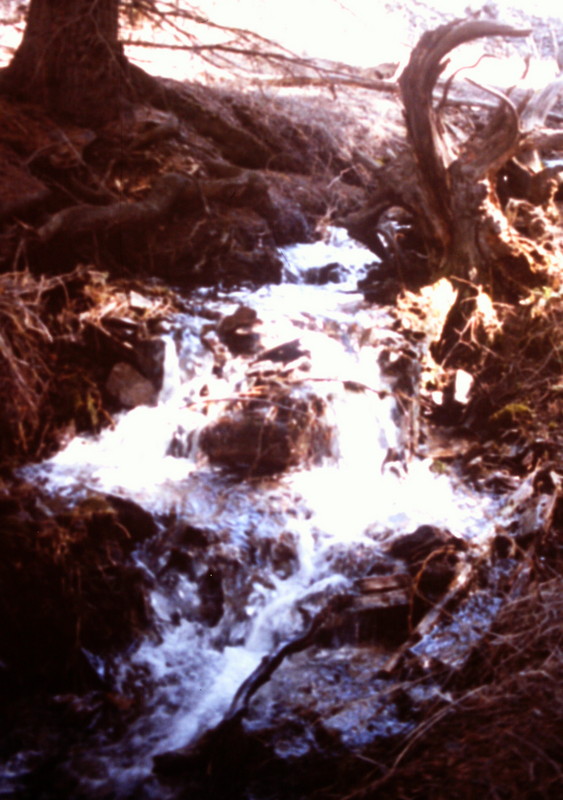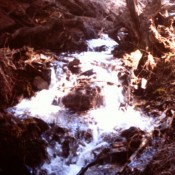Elevation: 10,721 ft
Prominence: 661

Climbing and access information for this peak is on Pages 266-267 of the book. The book lists the elevation at 10,716 feet. LiDAR measurements list the peak an elevation of 10,721 feet. McGowan Peak, which is the name in local usage, is identified as McGowan Benchmark on the LOJ website. Livingston Douglas added a more detailed description of the book’s ascent route (west ridge) plus more detailed driving directions and summertime photos. Updated November 2024
McGowan Peak is a rarely-climbed summit in the Pahsimeroi section of the Lost River Range. The west ridge is the standard ascent route. Use the trip report links for ascents by other climbers, including a 2018 Winter ascent. USGS Grouse Creek Mountain
West Ridge by Livingston Douglas
Access
McGowan Creek Road/BLM-120 is located along US-93 south of Challis at virtual MM147.1. It is 1.1 miles northwest of [signed] Gooseberry Creek Road. There is a small BLM road sign at the base of McGowan Creek Road. From US-93, turn northeast onto McGowan Creek Road and reset your odometer. At 0.6 miles, bear left at an unsigned road junction. At 2.1 miles, stop just before the steep, rocky road crosses a narrow drainage. Park here (6,875 feet and 44⁰20’39”N, 114⁰00’38”W).
McGowan Creek Road gets much steeper and rockier in its final mile. It ends at the mouth of the McGowan Creek Canyon. You may or may not be able to drive all the way to the top of the road. You will certainly need a 4WD vehicle with high clearance and good tires to get there. This is the first leg of a 2-peak adventure that includes McGowan Peak and Peak 9330. It covers 6.8 miles with 4,500 feet of elevation gain round trip.
West Ridge, Class 3
The Climb
From the parking spot (6,875 feet), hike about 0.2 miles northeast to the top of McGowan Creek Road. Leave the road at 6,960 feet (about 30-40 yards below its terminus) to bushwhack left/north across an easy section of McGowan Creek where it is underground and the creek bed is dry. Bushwhack east-northeast up the [mostly dry] McGowan Creek drainage using a game/use trail initially through a section of steeply angled talus/scree. The creek drainage is thick with brush, mountain mahogany, and pines in this early section.
The helpful trail soon ends but the drainage is easier now. It is a mix of pines with less brush and rock. Higher up, find another game trail and follow it up the center then left side of the drainage to approach a widening of the stream drainage at a grassy, marshy meadow. Drop down and cross to the south side of McGowan Creek. Bushwhack across a grassy marsh then climb southeast up an open, easy, wide gully (with little brush) briefly. Exit the left/northeast side of the gully to scramble up steep, loose gravel/dirt and short scrub to reach the crest of a steep, forested shoulder.
This shoulder is a mix of scattered pines (initially) then a typical pine forest. After an initial section of steep, loose gravel/dirt, the terrain is flatter and the ground terrain is pine duff. Skirt around ridge pines and blowdown as necessary and climb southeast. Follow an elk trail diagonally right/south to reach the crest of the southwest ridge of McGowan Peak just above, and south of, Saddle 8846. Descend five vertical feet to the forested saddle. From the saddle, scramble northeast up the forested ridge with a few minor ups and downs to reach tree line and open, rocky terrain.
Head northeast then east to the narrow ridge crest summit (and two USGS benchmarks). This is the official/northwest summit of McGowan Peak. The west ridge is mostly Class 2 but has a few Class 3 ridge rock strata to surmount. There are some areas of steep-ish, loose talus/scree. There are some bighorn sheep trails on the ridge to help get through the steep, loose areas. I investigated the nearby southeast summit (10720+) to see if it is slightly higher, but my altimeter measured it at a few feet lower than the [official] northwest summit hump. Neither the northwest summit nor the southwest summit has a summit cairn.

McGowan Peak as viewed from the southwest. My ascent route is left of center. Livingston Douglas Photo
Return down the steep, loose talus/scree (even in the pine forest) of the west ridge to reach the 8,846-foot connecting saddle with Peak 9330. This concludes the first leg of today’s 2-peak journey. Peak 9330 is up next.
Photo Essay of My 1991 Ascent

The McGowan drainage is typical of most Lost River Range drainages where water will often disappear underground. You will find good game trails in parts of the drainage and thick brush in other parts, but the walking is generally good.

Looking south down the main crest of the Pahsimeroi section of the Lost River Range from the summit of McGowan Peak.
Additional Resources
Regions: EASTERN IDAHO->Lost River Range->Pahsimeroi Range
Mountain Range: Lost River Range
Year Climbed: 1991













